Prestatyn Town Trail
Prestatyn has been one of the most famous seaside resorts in North Wales since the trains first arrived in 1848. Holiday-makers poured in from the smoke-filled cities of Victorian Britain to take the fresh Welsh air and follow the craze for sea bathing.

Distance: 2 miles / 3.2 km excluding Roman Bath House
Difficulty: Mostly easy but walk to Hillside Gardens is quite steep
Walking time: 2 hours
Start point: Nant Hall Road car park LL19 9LG
Public transport: Traveline Cymru 0800 464 0000,
National Rail Enquiries 03457 484950
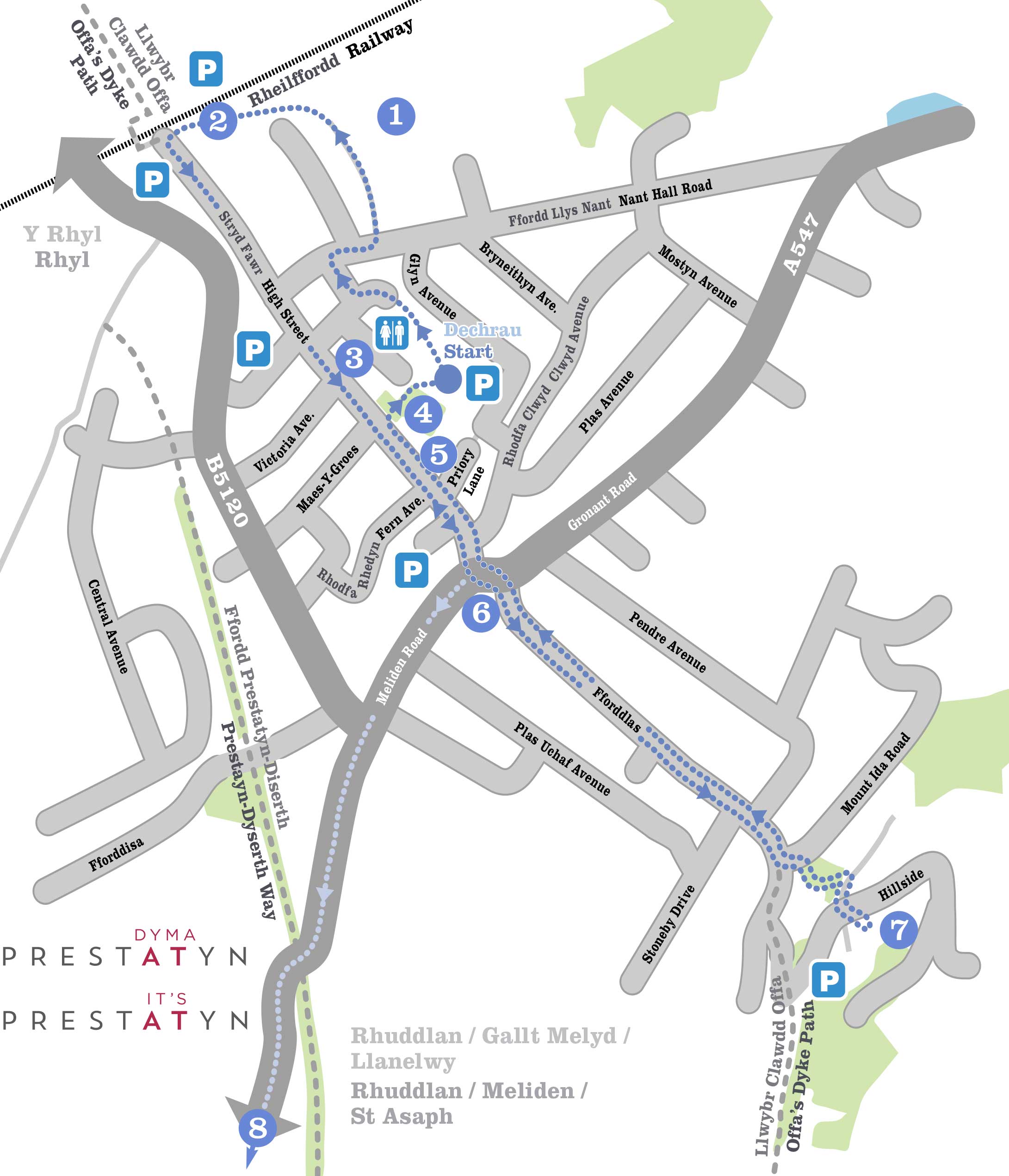

Prestatyn
Shopping Park
Start in the car park behind the parish church and walk down to Nant Hall Road.
The brick building on your left was built in 1903 as a fire station and council offices. Opposite is the old police station – you can still see the bars on the windows down the side. Now cross Nant Hall Road, turn right and then left into the main entrance of Prestatyn Shopping Park. You may well find 160,000 square feet of retail space packed with big name brands a little distracting. No need to resist. Take all the time you like then make your way past the “living wall” to the bottom of the High Street.
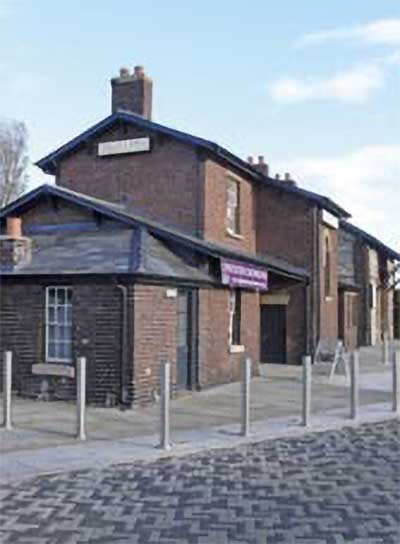
Old Railway
Station
The opening of the Chester to Bangor railway line on 1st May 1848 began to turn Prestatyn from a sleepy coastal village into one of Britain’s most fashionable resorts. This is the original station and goods shed, one of only four by railway architect Francis Thompson still standing in North Wales. By 1897 its two platforms lit by oil lamps just weren’t enough to cope with the extra traffic and a new station was built. On either side of the footbridge are two steel sculptures. The far one points towards the promenade. The one in front of you, with its jaunty walker, points up the High Street because you’re now following Offa’s Dyke Path National Trail. Brass acorns in the pavement show the way.
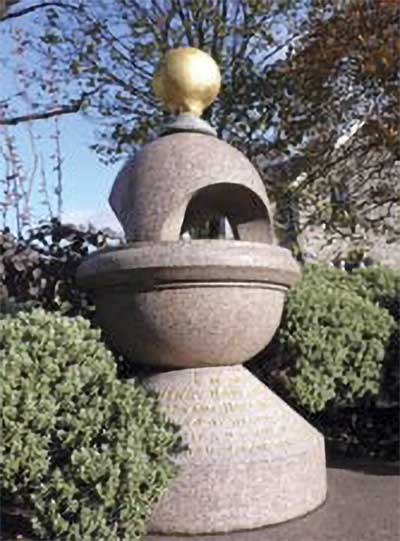
Pochin Fountain
Henry Davis Pochin is the creator of modern Prestatyn. In 1869 this remarkable industrial chemist bought 400 acres of land – and got to work with typical Victorian vigour. He built embankments to hold back the sea and brought piped water, gas and mains drainage to the town. Until then High Street was mostly just rows of thatched cottages straggling up the hill. It soon became what you see today – a vibrant mix of independent shops, eating places and watering holes dating from the town’s late Victorian and Edwardian golden age. This fountain, which once stood on the foreshore, marks Pochin’s achievements.
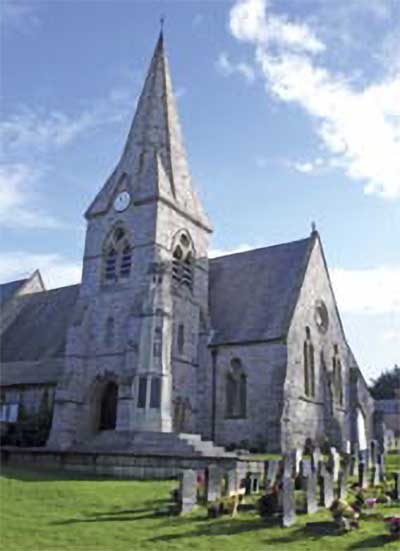
Christ Church
Prestatyn’s rapid growth led to the creation of a new parish – and a splendid parish church to go with it. Not that Christ Church was always quite so imposing. Built in 1863, its south aisle was added in 1905 and the north aisle extended in 1910. The new chancel and Lady Chapel of 1926 completed the transformation. Outside lie the graves of six choirboys aged between six and 11 who drowned in a swimming accident before choir practice on 17th July 1868. Look for the row of little stone crosses near the far end of the south wall. There’s a stained glass memorial to two of the boys, brothers Samuel and George Gilderoy, above the altar in the Lady Chapel.
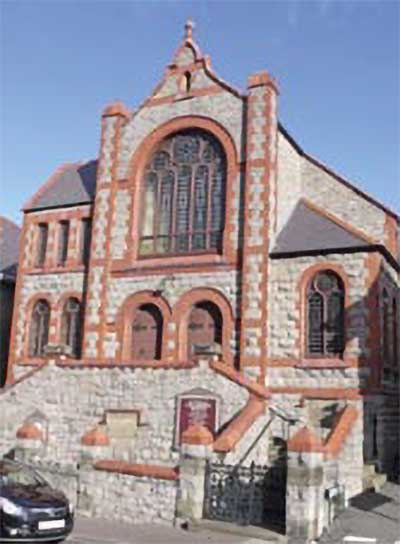
Rehoboth Chapel
Rehoboth Welsh Presbyterian Chapel, built in 1863 with major extensions in 1894, is a fine example of a turn-of-the-century Welsh chapel. Standing opposite a shop named “The Emporium”, it was part of the construction boom that swept away the cottages lining this once unlit, sooty and muddy street. In Fforddlas you can still see the open stone gutter that once ran all the way down the High Street and became a torrent in wet weather.
At the top of High Street, cross into Fforddlas. The rest of the trail is quite steep but you can drive up and park near the shelter if you like.
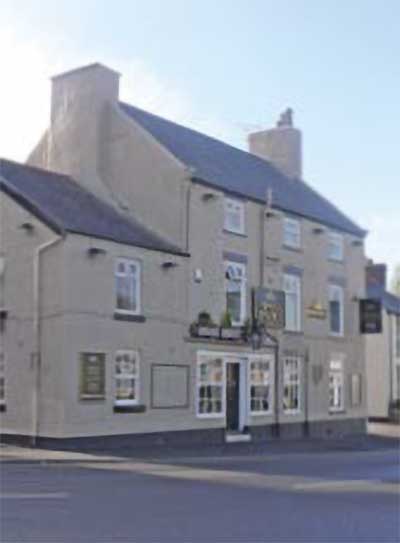
Cross Foxes
Built in 1664, this is the oldest pub in Prestatyn and one of its few surviving early buildings. Fashionable ladies clustered here while exploring the vogue for sea bathing in the late 18th and early 19th centuries. One frequent guest was Hester Thrale, later Piozzi – author and close friend of Dr Samuel Johnson. According to local historian Harry Thomas, she described Prestatyn as “very romantic, truly solitary”. But she spoiled it a bit by complaining there was no room to swing a cat.
At the top of Fforddlas, turn left into Mount Ida Road and immediately right into Hillside Gardens.
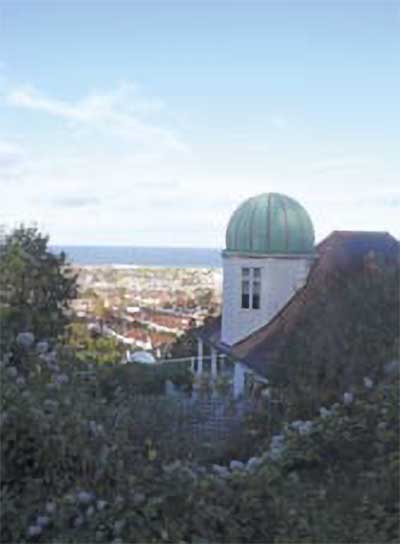
Hillside Gardens
and Shelter
You can’t miss the superb sculpture of the helmet, embossed with sessile oak leaves. It celebrates the town’s Roman heritage and the beauty of surrounding Bishop’s Wood and Prestatyn Hillside. A short steep climb through the gardens reveals a glimpse of Uplands, built by eccentric inventor Thomas Thorp in 1912 to incorporate a revolving dome observatory. He certainly knew where to find the best view. The terraced concrete shelter itself, presented to the town in 1929 by wealthy local benefactor J F King, commands a stunning 180-degree panorama of the North Wales coast, Anglesey and distant Snowdonia. Just the spot to get your breath back.
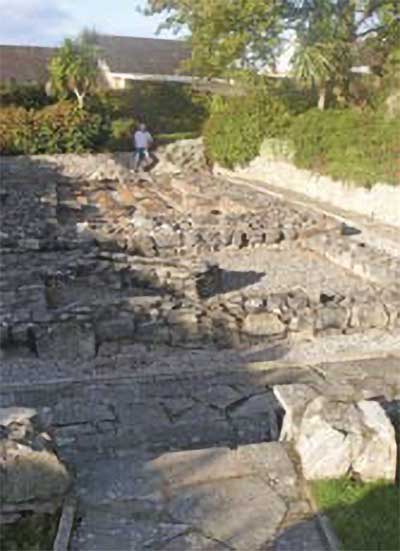
Roman Bath
House
You may prefer to drive the 1.5 mile / 2.5 km round trip to the Roman Bath House. Look for the brown sign off Meliden Road.
You’re searching for Romano British remains nearly two millennia old. So you might well think the turn into Melyd Avenue can’t possibly be right. But persevere. This remarkable bath house, built about AD120 by a detachment of the 20th Legion based in Chester, really is in the middle of a perfectly normal housing estate. Here bathers would sweat profusely, oil their bodies and scrape them clean with a curved tool called a strigil. All because no one had invented soap.
